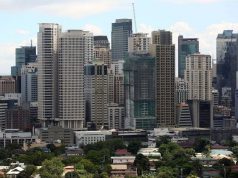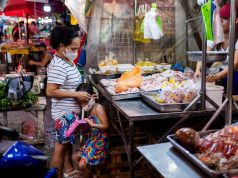
Next week Asia-Pacific Economic Cooperation leaders will meet in Danang. They face a region divided as never between a few rich and the rest.
After decades of leading the world in economic growth that benefited everyone, Asia today is rapidly becoming a fractured region with sharp economic and social divisions between the rich and the underdogs.
The Danang summit should be a reflective moment for APEC political and business leaders to critically review their policies and growth paradigm which are failing to achieve shared prosperity and just helping a minority to increase their wealth while leaving millions of women, workers and peasants behind.
In Asia- Pacific, the population-weighted income Gini coefficient, based on household income estimates, increased from 0.37 to 0.48 between 1990 and 2014; an increase of almost 30% in less than 3 decades.
In Indonesia, the four richest men have more wealth than the poorest 100 million people. In Vietnam, 210 of the country’s super rich individuals earn more than enough in one year to lift 3.2 million people out of poverty and end extreme poverty. Similarly, 1% of rich people in Thailand own 56% of national wealth, and half of the wealth in Indonesia is owned by just 1%.
Despite political pronouncements and inclusive growth mantras, why is exactly the opposite happening? There are four major causes.
- Firstly, the economic growth model pursued in the region is sucking benefits upward from women, workers, fisherfolk, peasants and small producers. Instead of increasing access to land and other productive resources, the growth model has helped a few rich to capture resources.
- Secondly, women’s work is not treated equally. Women are burdened with unpaid care work and low paid jobs exacerbating gender inequality. Low paid and unpaid care work by millions of women in Asia has anchored rapid economic growth, but the very system they support is leaving them behind.
- Thirdly, unjust fiscal systems, where rich corporations and individuals are not contributing their fair share to national revenue, are affecting public investment in essential services. Dwindling public services such as universal healthcare, quality education and social protection are shrinking the opportunities for future generations to break the poverty cycle.
- Fourthly, people not only lack access to decent wages, productive resources and public services but they also lack voice and an ability to participate in policy and decision-making processes. Much of the economic decision making happens behind closed doors, with no mechanisms in place to ensure broad citizens’ participation.
APEC leaders agreed that inclusive growth should be at center stage in the coming leaders’ meeting. The Vietnamese Government, which hosts this year’s meeting, underscores the importance of promoting economic, financial and social inclusion as strategies to achieve inclusive growth.
In Oxfam’s new policy paper, “Redefining inclusive growth in Asia- How APEC can achieve economies that leave no one behind,” we propose eight simple ideas to turn APEC’s inclusive growth aspiration into reality:
- APEC leaders must recognise that rapidly growing inequality is a serious threat to growth and prosperity in the region. They should agree to all set national time-bound targets to reduce the gap between rich and poor, in line with their commitments under Sustainable Development Goal 10.
- Revenue mobilization is critical to finance sustainable development goals and provide public services. APEC leaders must work together to create tax systems where rich individuals and corporation pay their fair share and put a stop to tax evasion and tax dodging. APEC must foster regional and global tax cooperation to end tax base erosion and profit shifting frameworks, and enhance tax administration capacity.
- Essential public services have transformational power, therefore APEC members should reaffirm their commitment to increase resources for essential public services such as education, health and social protection. They should respect global targets to spend a minimum of 15% of their budgets on health and 20% on education.
- APEC leaders should legislate and implement living wages as a central component of a strategy to promote economic inclusion and reduce the gender pay gap. Governments must live up to the Bali Declaration on labour rights and the UN Guiding Principles on Business and Human Rights.
- Support Micro, Small and Medium Enterprises led and owned by women. APEC should ensure and expand women’s access to credit and capital, and invest in their capacity building, particularly on enterprise development and management. Equally important, APEC must encourage its members to extend and expand public services aimed at supporting care work, reducing and redistributing unpaid care work. This will allow women to invest time and energy to establish and manage enterprises, and expand women’s life choices beyond economic areas alone.
- Uphold direct citizen engagement in APEC pillars for inclusion. APEC leaders should promote direct citizens’ engagement in all three pillars of social inclusion — economic, social and financial. APEC can create an enabling environment in which communities contribute to decision-making, making sure that workers are represented in corporate structures.
- Create an APEC stakeholders’ engagement mechanism so that representatives from people’s organizations and civil society groups can participate in and contribute to APEC processes. The creation of these mechanisms will demonstrate APEC’s commitment to inclusion.
- Measuring progress in reducing inequality. SDG 10 states that by 2030, all countries progressively achieve and sustain income growth of the bottom 40 percent of the population at a rate higher than the national average. Therefore, APEC members must set clear national targets to reduce inequality and collect accurate data on top incomes and wealth, aiming to achieve SDG 10.
Poverty and extreme inequality are not destiny. They can be challenged and eliminated. APEC leaders are in a unique position to put an end to these long-standing problems by building a human economy, where no one is left behind and where we can build a better world for our children and grandchildren.










